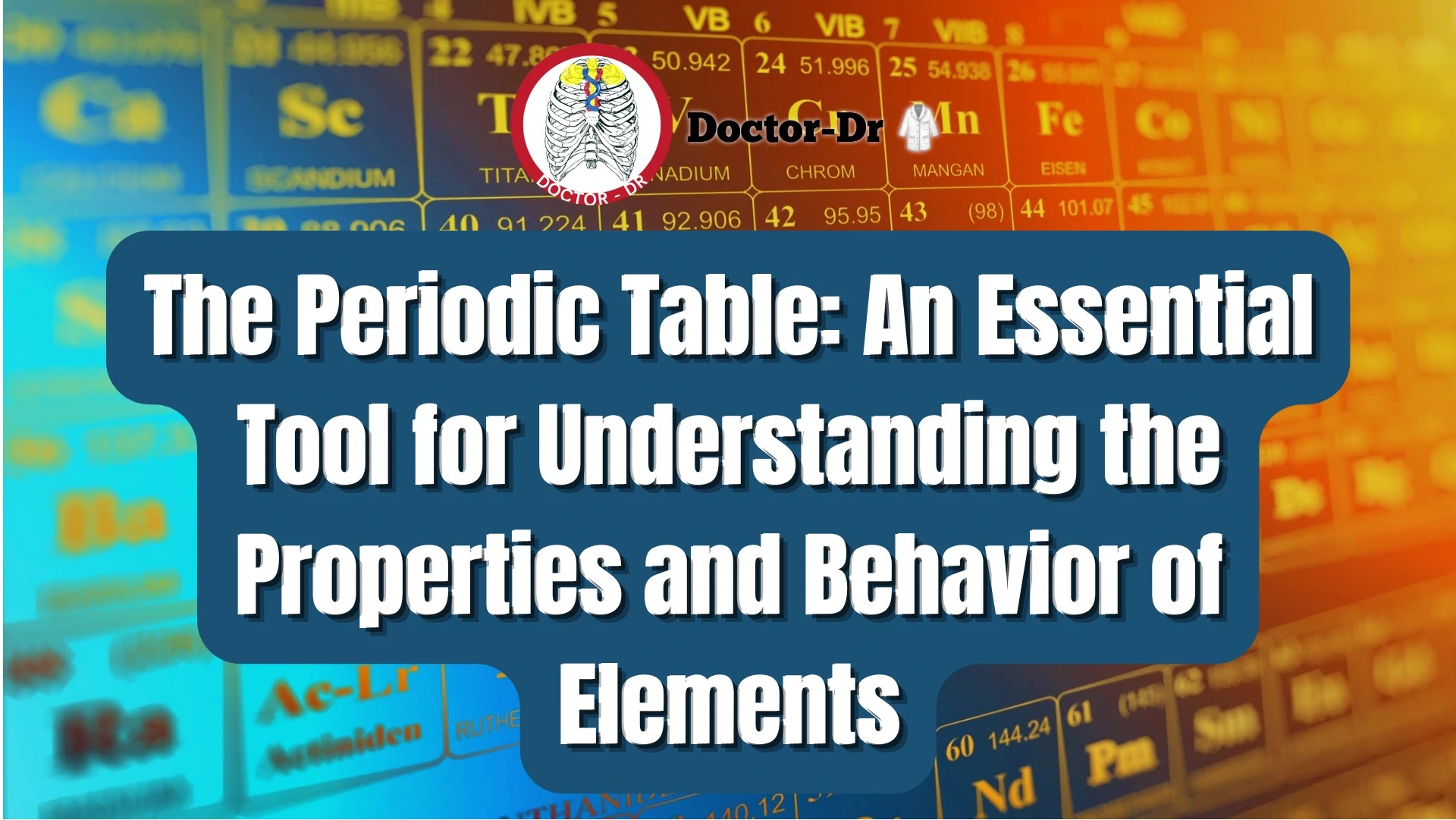Introduction to the Periodic Table:
The Periodic Table is a graphical representation of all the known elements arranged in order of their atomic number, electron configuration, and chemical properties. It is a fundamental tool in chemistry, used to predict the behavior and reactivity of elements, and to understand the relationships between them.
History of the Periodic Table:
The Periodic Table was first developed by the Russian chemist Dmitri Mendeleev in 1869. He arranged the elements in order of increasing atomic weight, and noticed that elements with similar chemical properties tended to occur at regular intervals. This led him to create a table with elements arranged in rows and columns, which became the basis for the modern periodic table.
Structure of the Periodic Table:
The Periodic Table is arranged in rows, called periods, and columns, called groups. The elements in each row have the same number of electron shells, while the elements in each column have the same number of valence electrons. There are currently 118 known elements, arranged in seven periods and 18 groups.
Groups of the Periodic Table:
The groups of the Periodic Table are numbered 1-18, and are also referred to by their traditional names, such as the alkali metals, alkaline earth metals, halogens, and noble gases. Each group has unique chemical properties, based on the number and arrangement of electrons in their outermost energy level.
Periods of the Periodic Table:
The periods of the Periodic Table are numbered 1-7, and represent the number of electron shells in each element. Elements in the same period have the same number of electron shells, but differ in the number of electrons in their outermost shell.
Element properties on the Periodic Table:
The elements on the Periodic Table are arranged in order of increasing atomic number, which is the number of protons in the nucleus of an atom. The elements also have other properties that vary across the table, such as atomic mass, electron configuration, electronegativity, and chemical reactivity.
Uses of the Periodic Table:
The Periodic Table is an essential tool for chemists, physicists, and other scientists, as it allows them to predict the behavior and properties of different elements, and to understand the relationships between them. It is also used in industry, medicine, and technology, to develop new materials and compounds with specific properties and applications.
Trends in the Periodic Table:
The Periodic Table exhibits various trends and patterns that help us to predict the properties of elements. These trends include atomic radius, ionization energy, electronegativity, and metallic character, which vary systematically across the table.
Atomic radius refers to the size of an atom, which increases from right to left within a period and from top to bottom within a group. This is due to the increasing number of electron shells and decreasing effective nuclear charge.
Ionization energy is the energy required to remove an electron from an atom, which generally increases from left to right within a period and from bottom to top within a group. This is due to the increasing effective nuclear charge and decreasing atomic radius.
Electronegativity is a measure of an atom's ability to attract electrons towards itself, which increases from left to right within a period and from bottom to top within a group. This is due to the increasing effective nuclear charge and decreasing atomic radius.
Metallic character refers to the tendency of an element to behave as a metal, which generally decreases from left to right within a period and from top to bottom within a group. This is due to the increasing ionization energy and electronegativity.
Classification of Elements:
Elements on the Periodic Table can be broadly classified into metals, nonmetals, and metalloids, based on their physical and chemical properties. Metals are typically shiny, ductile, and good conductors of heat and electricity. Nonmetals are typically dull, brittle, and poor conductors of heat and electricity. Metalloids have properties intermediate between metals and nonmetals.
Isotopes:
Most elements on the Periodic Table have multiple isotopes, which are atoms with the same number of protons but different numbers of neutrons in their nucleus. Isotopes have similar chemical properties, but different physical properties, such as atomic mass and radioactive decay.
Conclusion:
In conclusion, the Periodic Table is a fundamental tool in chemistry, used to understand the properties and behavior of elements. It is a graphical representation of all the known elements, arranged in order of their atomic number, electron configuration, and chemical properties. The table exhibits various trends and patterns, which allow us to predict the properties of elements and their behavior in different chemical reactions. The Periodic Table is an essential tool for scientists in various fields, and has numerous applications in industry, medicine, and technology.




~1.webp)
.webp)
.webp)
